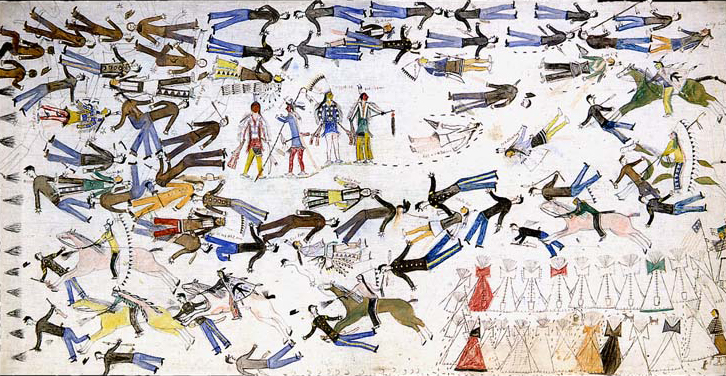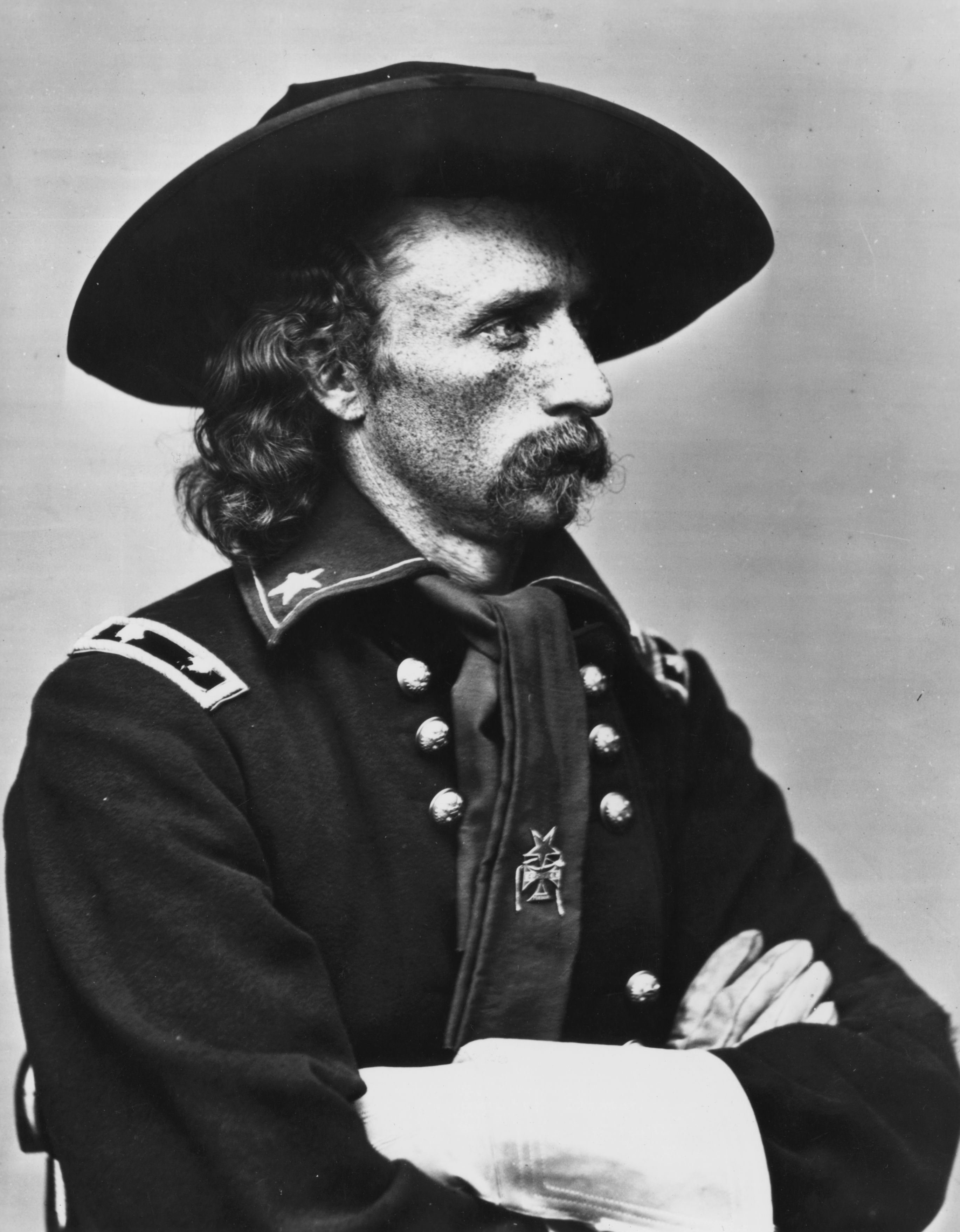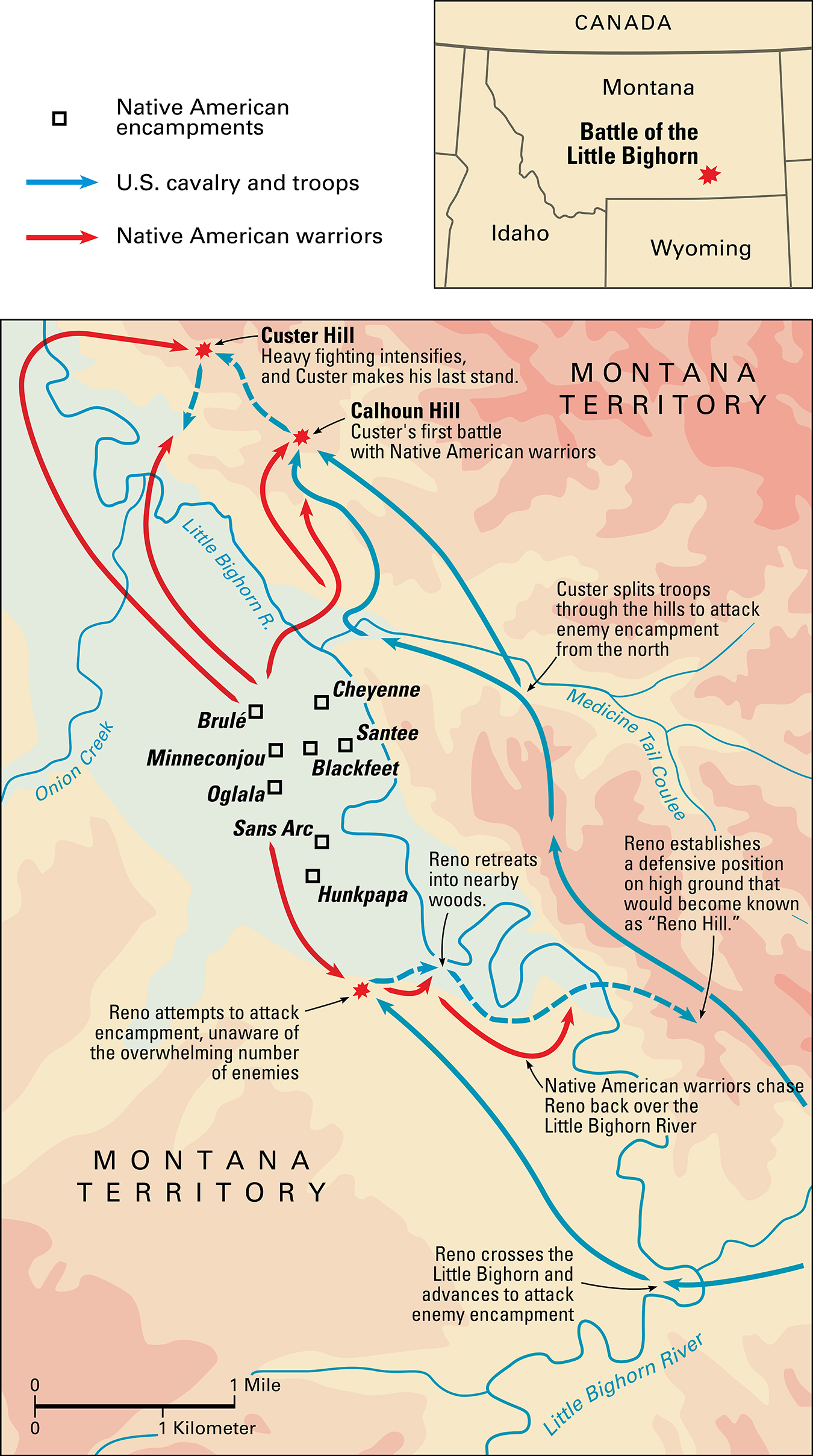Little Bighorn, Battle of the, was one of the worst defeats the United States Army ever suffered against Native American forces. It took place in southeastern Montana on June 25 and 26, 1876. In the battle, Sioux and Cheyenne warriors killed U.S. Lieutenant Colonel George A. Custer and more than 250 of his soldiers. The battle is named after a river on the battlefield.

Background.
In 1874, Custer led a U.S. Army expedition into the Black Hills, a range of low mountains in what are now southwestern South Dakota and eastern Wyoming. A treaty in 1868 had given the Sioux ownership of the Black Hills. Custer’s expedition sought a site for a fort and to investigate rumors that gold had been discovered in the region. A report from Custer indicated that there was gold, and miners and settlers poured into the area.

The United States tried to purchase the Black Hills, but the Sioux refused. In late 1875, the U.S. government decided to ignore the 1868 treaty and take control of the land. The government ordered all Sioux to go to reservations by the end of January 1876 and to remain there. The Sioux who refused to do so would be considered hostile. Many Sioux ignored the order.
The U.S. Army sent three columns to force the Sioux onto the reservations. One column was commanded by Brigadier General Alfred Terry. It included the 7th Cavalry, led by Custer. In June, the main part of Terry’s force reached an area in the Montana Territory where Terry expected to find the “hostile” Sioux. Terry ordered Custer’s group of about 650 troops and native scouts to a position south of the Sioux. Terry hoped that Custer would drive them north toward more U.S. Army troops.
On the morning of June 25, Custer’s scouts found a village in the valley along the Little Bighorn River. Custer expected to find about 1,000 warriors at the village. However, the camp actually had at least twice that number. The group of Sioux and Cheyenne warriors was one of the largest Native American fighting forces in history. Its leaders included Crazy Horse, Gall, and Sitting Bull.
The battle.
Custer learned that his forces had been sighted, and he decided to attack before the warriors could escape. He split his soldiers into three main groups. Custer led one group, and Captain Frederick W. Benteen and Major Marcus A. Reno led the others.
Custer instructed Benteen to lead his group southwest and scout for native warriors, and then to head north and rejoin Custer’s force. Custer ordered Reno to head west across the Little Bighorn River, and then to turn northwest and attack the village. Custer’s group moved to the northwest, possibly to prevent anyone from fleeing.

Reno halted just outside the village, and his soldiers battled native warriors in the valley. Reno’s troops were badly beaten, and they retreated to a hill on the east side of the river. By retreating, Reno allowed the Sioux and Cheyenne to send most of their forces to the north to meet Custer‘s group. Benteen’s group met Reno’s troops on their hilltop refuge. Custer had earlier sent a messenger to Benteen with additional instructions. Custer wanted Benteen to rejoin Custer’s group and to bring reserve ammunition. However, Benteen stayed with Reno and established a defensive position.
As Custer headed north, he further divided his forces into two groups. However, the Sioux and Cheyenne warriors overwhelmed both groups. Custer and his entire unit—approximately 210 soldiers—were killed.
Benteen’s and Reno’s forces were about 4 miles (6.5 kilometers) away from Custer’s group. Some soldiers, led by Captain Thomas Weir, attempted to help Custer, but the Native American warriors forced them back to the hills. The fighting continued until nightfall and resumed the following morning. Later that day, the native forces found out that more U.S. troops were coming. They disbanded their camp and left the territory. General Terry arrived with his soldiers on June 27.
The aftermath.
Over the course of the two days of fighting, 263 American soldiers were killed. Six more died later from their wounds. No one knows how many Native Americans were killed at the battle. Historical estimates usually range between 50 and 200. After the battle, the United States reinforced the Army in the region. Within a few years, the Army had driven the Sioux onto reservations or into Canada.
The Battle of the Little Bighorn is sometimes known as “Custer’s Last Stand.” The American public at the time was shocked that Native Americans defeated such an accomplished military officer and all his troops. Custer’s critics blamed him for attacking without waiting for the rest of Terry’s soldiers. Some people also criticized Custer’s decision to divide his forces against a larger enemy group. Custer’s supporters claimed that Reno had been a coward for retreating. Reno asked the Army to investigate his conduct, and a military court cleared him of blame in 1879. Some blamed Benteen for not obeying Custer’s order and for his slowness in reaching the battlefield. Historians still argue about the reasons for Custer’s defeat.
See also Crazy Horse ; Custer, George Armstrong ; Gall ; Indian wars (Little Bighorn) ; Reno, Marcus Albert ; Sitting Bull .
